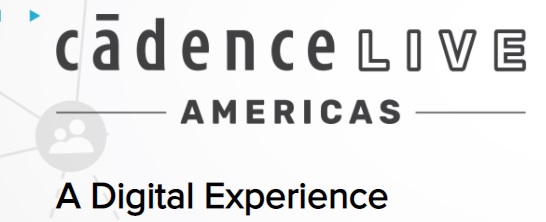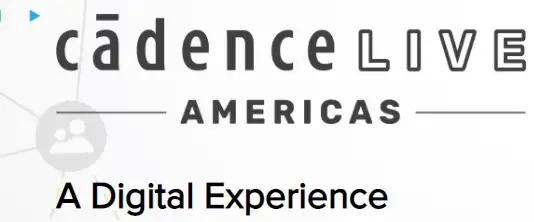Cadence hosted its annual CadenceLIVE Americas conference June 8th-June 9th. Four keynotes and eighty-three different talks on various topics were presented. The talks were delivered by Cadence, its customers and partners.
The C-suite keynotes were delivered by Lip-Bu Tan (CEO) and Dr. Anirudh Devgan (President). The talks provided insights into Cadence’s strategy, direction, technology and latest transformational products. The two guest keynotes were from Google and Air Force Research Laboratory (AFRL). Earlier blogs covered the Cadence keynotes and Google keynote.

AFRL keynote at CadenceLIVE? The relevance may not be immediately relatable unless one is knowledgeable in the history of the Air Force, computing and the semiconductor industry. With his talk titled, “AFRL Microelectronics Perspectives”, Dr. Yadunath Zambre, chief microelectronics technology officer at the AFRL, connected the dots. This keynote, delivered back-to-back with Devgan’s keynote, highlighted the mutual dependence and reliance between the semiconductor industry and the military.
The Air Force jumpstarted the revolution in computing roughly seven decades ago. And along with other arms of the military, it contributed to significant growth of the semiconductor market. The procurement level through the 1990s was significant enough for semiconductor companies to run dedicated fabs to support military requirements. It is not that all of a sudden semiconductor needs of the military evaporated. The demand has grown over time but the markets for commercial applications started outweighing the demand for military applications. And the disaggregation and offshoring of the semiconductor supply chain have added more challenges for the military from design, manufacturing and procurement perspectives.
Dr. Zambre, through his keynote address, walks the audience through the AFRL’s needs, challenges, procurement objectives and the solutions approach it utilizes to meet their electronics product needs.
AFRL’s Needs
With the Department of Defense (DoD) having to deal with maritime, land, air, cyberspace and space domains, it runs multi-domain operations and uses various products to deploy a range of very different capabilities. This calls for different materials, processes, process geometries, substrates and packaging. In turn, this involves not just digital electronics but also analog, RF, high voltage/current switching, biological sensors, etc. and heterogenous integration and packaging, but in essence, it involves multi-physics modeling and simulation for fluid dynamics, thermal, structural and mechanical properties.
AFRL’s Challenges
The commercial market demands on the semiconductor supply chain dwarfs market demand from the DoD. With not many, if any, incentives for suppliers to support DoD production needs, availability and access to manufacturing capacity is low. Adapting or extending commercially-available products to meet the DoD’s unique requirements introduces technical and cost hurdles. And with the supply chain based in regions with adversary influence, security and trust is a big concern.
Procurement Objectives
With the average life of different products in the 10- to 30-year range and a viable supply chain that is outsourced and offshored, the following are some key goals:
- Capping the lifecycle cost
- Improving cost and schedule predictability
- Access to a reliable and secure ecosystem
- Better visibility into suppliers
Solutions Approach
Many of the platforms and technologies that Cadence’s Devgan highlighted during his keynote address the AFRL’s needs and challenges. And the aerospace and defense industry is just one of the many markets these platforms support. With that kind of commonality, it makes it easier for the supply chain to cost-effectively support the DoD’s needs without having to develop very different solutions.
Digital twins, virtual prototyping and shift-left approach methodologies help reduce cost per year. They help demonstrate proof of concept and develop requirements and cost estimates without having to fully develop all of the hardware. The Air Force already has many years of experience leveraging these methodologies in building aircraft and rocket designs. EDA tools have now gotten to a level that enables doing designs with just one spin. Emulation with digital twins makes it easier to develop plug-and-play replacements for form, fit and function and help extend life of products. This approach caps lifetime cost and reduces average cost-per-year compared to the historical approach of block upgrades every five years.
Summary
Dr. Zambre’s talk not only gave the audience a nice historical review of the Air Force and the aerospace and defense journey as it relates to electronics and semiconductors, but it also showed how the technology needs and solutions have converged between the commercial and aerospace and defense sectors. The products the AFRL produces are different than commercial and industrial market products, but the semiconductor technology platforms and tools to design, test and produce are really not that different in the end.
Share this post via:






Comments
There are no comments yet.
You must register or log in to view/post comments.